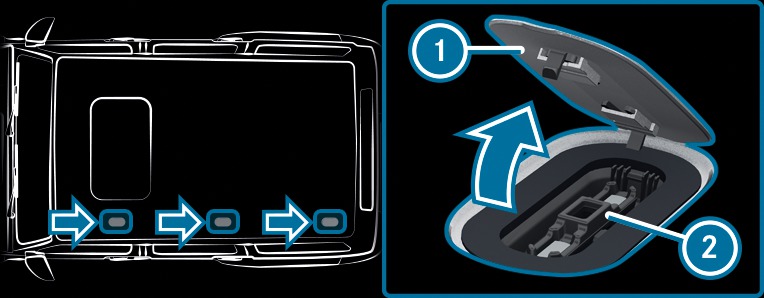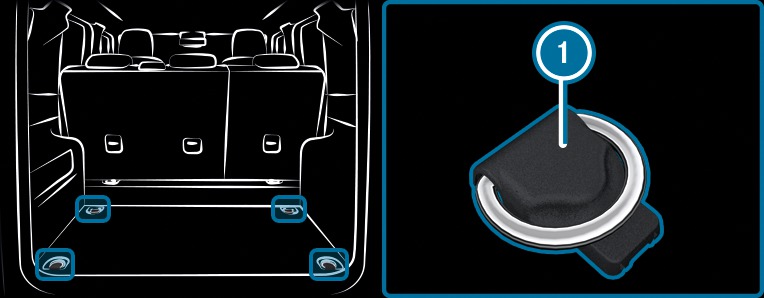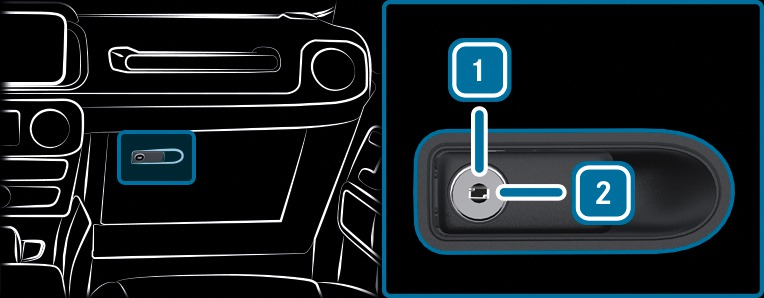When you load the roof, the centre of gravity of the vehicle rises and the usual driving characteristics as well as the steering and braking characteristics change. During cornering, the vehicle tilts more strongly and may react more sluggishly to steering movements.
If you exceed the maximum roof load, the driving characteristics, as well as the steering and braking characteristics, will be greatly impaired.
You may slip and/or fall.
You may damage the vehicle and then fall.
If you use the wheel arch flares and bumpers as a step, they may be damaged or detach from the vehicle.
The vehicle could be damaged by roof racks which have not been tested and approved by Mercedes-Benz.
The weight of the roof luggage, including the roof rack, must not exceed the maximum permitted roof load.
The maximum roof load is 150 kg if there are at least three pairs of support feet.
This applies if the load is distributed evenly across the entire roof surface. The maximum load for each pair of roof rack support feet is 50 kg.
When the vehicle is at a standstill and when at least three pairs of support feet are used, the maximum permissible roof load of 150 kg may be exceeded by a maximum of 150 kg, e.g. when a roof tent is used. Always comply with the roof rack manufacturer's installation instructions.

The covers may be damaged and scratched when being opened.
Bear in mind the following related topic:
Vehicle tool kit overview More
An incorrectly attached roof rack or an incorrect roof load can become detached from the vehicle. Be sure to comply with the roof rack manufacturer's installation instructions.
 in the direction of the arrow with the disassembly tool.
in the direction of the arrow with the disassembly tool.  .
. Observe the notes on loading the vehicle More.


If you inadequately stow objects in the vehicle interior, they could slip or be tossed around and thereby strike vehicle occupants. In addition, cup holders, open stowage spaces and mobile phone brackets cannot always restrain the objects they contain in the event of an accident.
There is a risk of injury, particularly in the event of sudden braking or a sudden change in direction.
Observe the notes on loading the vehicle.





If you inadequately stow objects in the vehicle interior, they could slip or be tossed around and thereby strike vehicle occupants. In addition, cup holders, open stowage spaces and mobile phone brackets cannot always restrain the objects they contain in the event of an accident.
There is a risk of injury, particularly in the event of sudden braking or a sudden change in direction.
Observe the notes on loading the vehicle.

 (to lock) or anti-clockwise
(to lock) or anti-clockwise  (to unlock).
(to unlock). 
